For several years now, AMD has had GPUs that competed in the lower to mid-ranges of the consumer GPU segment. On the other side, NVIDIA has offered a full range of GPUs from lower-end to very high-end with its data center CPUs. AMD is on the journey to match NVIDIA’s portfolio and the next step is the AMD Radeon 6000 series infused with the AMD RDNA 2.
AMD Radeon 6000 Series
There are three new cards being launch in the AMD Radeon 6000 series. Interestingly the starting point of these GPUs AMD is comparing to the performance of the NVIDIA GeForce RTX 2080 Ti (also reviewed in lower-cost and blower form factors.) Let us get a quick look at these cards starting from the top-end.
AMD Radeon RX 6900 XT
The AMD Radeon RX 6900 XT is AMD’s top-bin part that it compares to the NVIDIA RTX 3090. It offers a full 80 compute units, high clock speeds, 16GB of GDDR6 memory, and a 300W total board power. We are going to discuss the 128MB Infinity Cache at the end since that is a common feature.
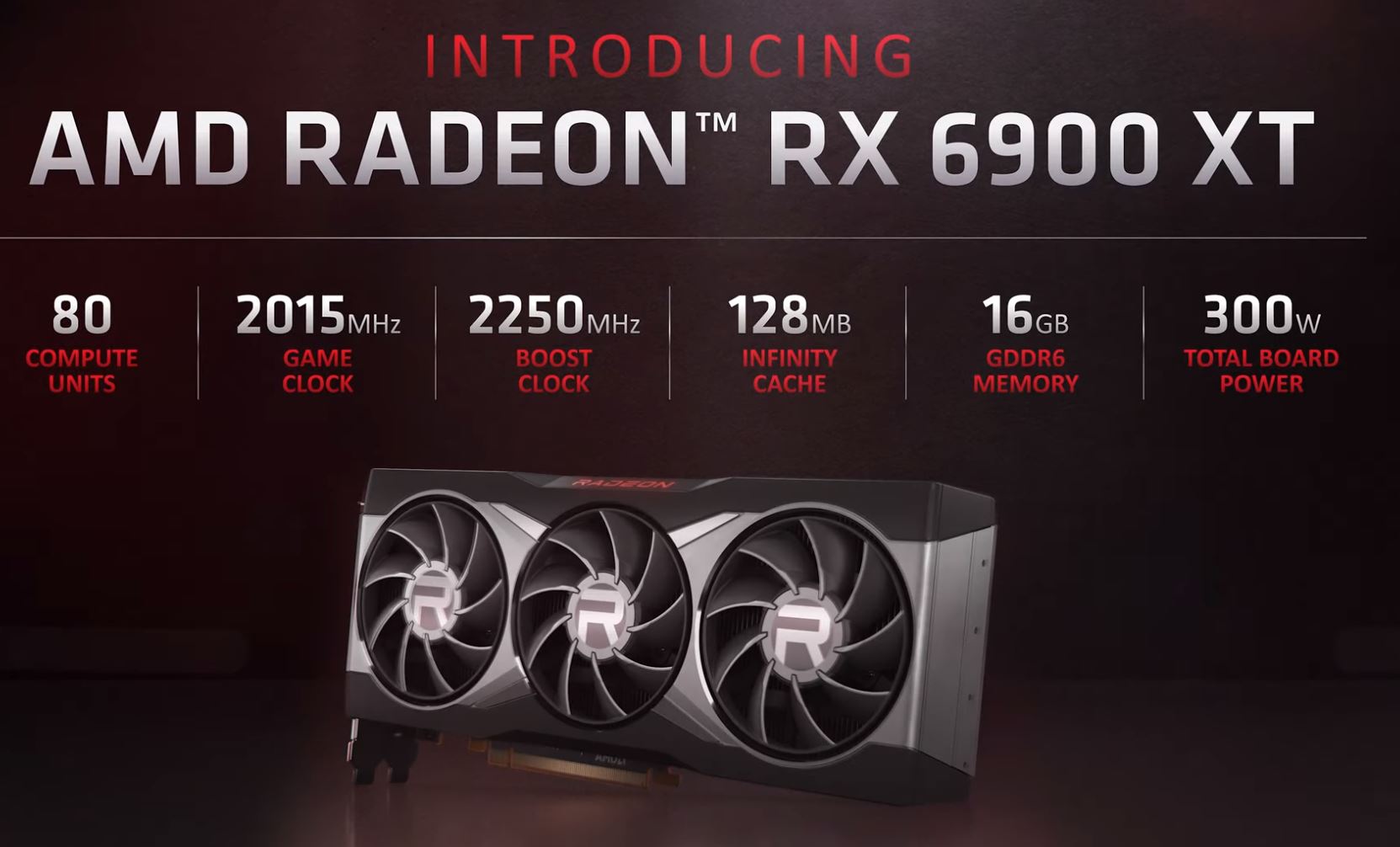
Something to note quickly is that NVIDIA is using GDDR6X on the RTX 3090. Still, AMD is able to show excellent gaming performance on par with the RTX 3090.
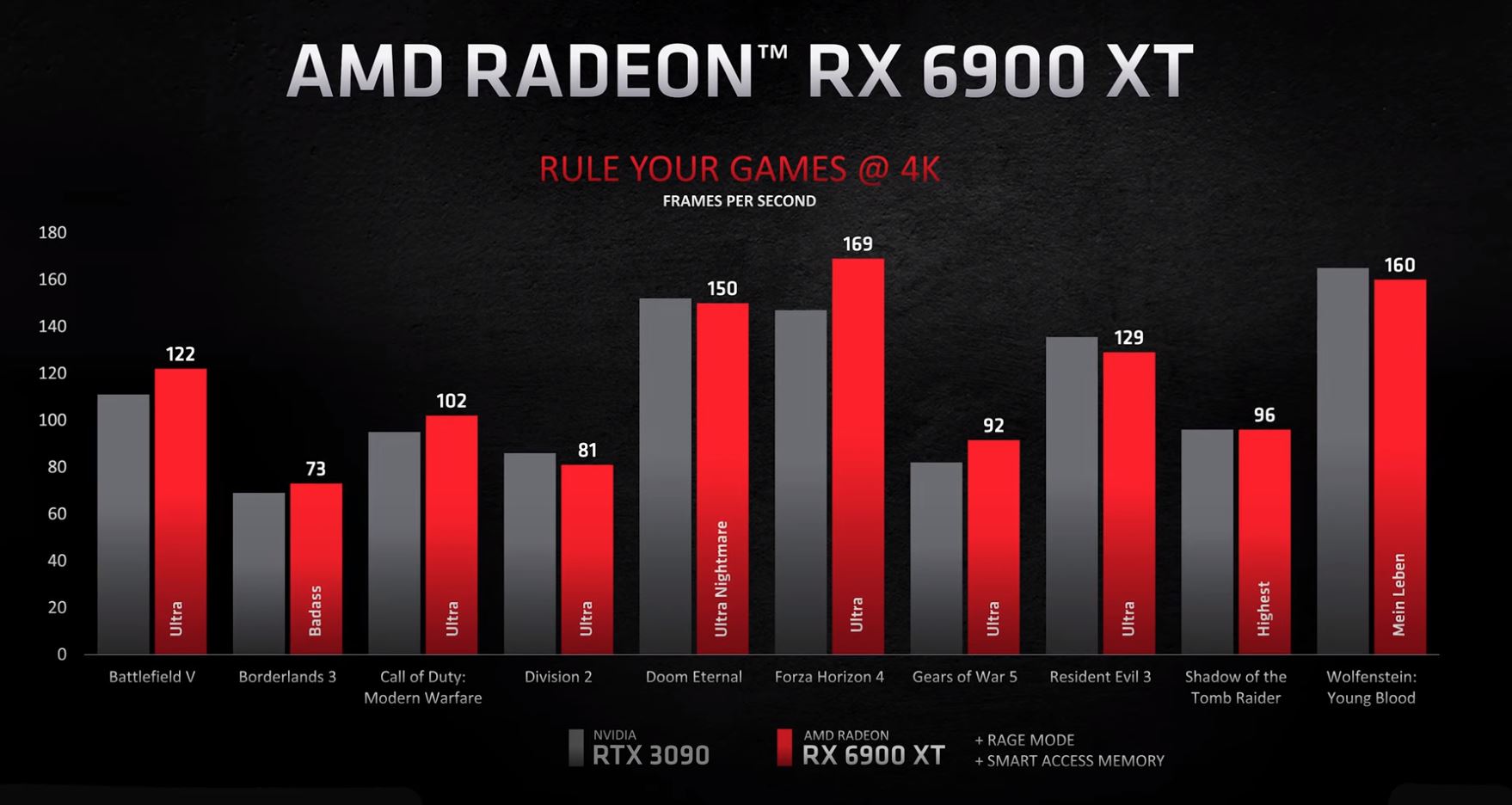
[Editor’s note: As a quick note here, we are waiting for NVIDIA to publish an official TensorRT supporting container to publish our RTX 3090 review since we want to have comparable tests and numbers to our ongoing series. We similarly held our AMD RX 5000 series reviews last year. We are told that we can get a more apples-to-apples comparison on our deep learning/ AI benchmarks in November 2020.]
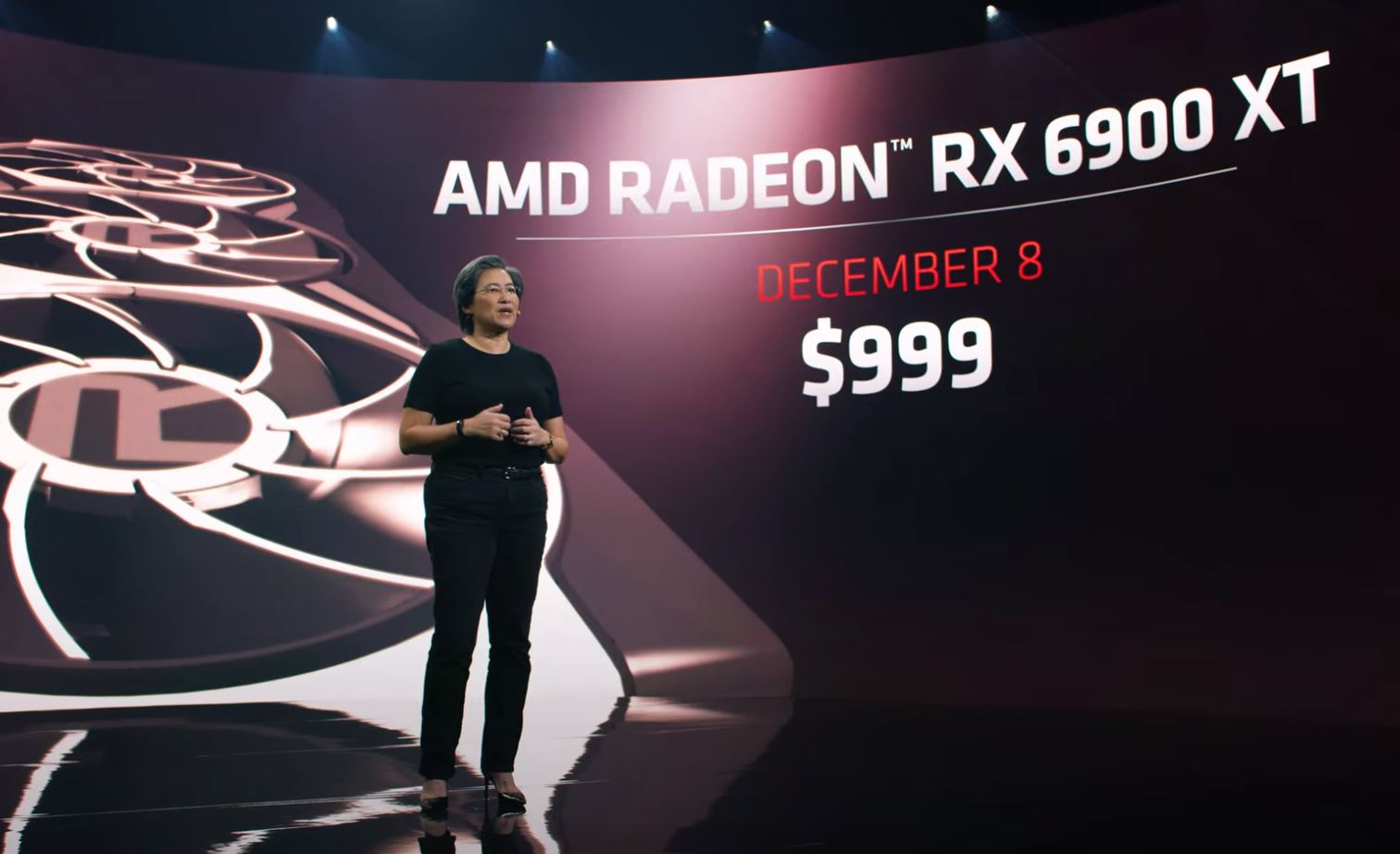
These cards will be available on December 8, 2020 at $999. Competition is bringing NVIDIA pricing down, but it also means we have limited availability of the competing NVIDIA part at this price range. While we have a 300W GPU, that is less than NVIDIA’s offering.
AMD Radeon RX 6800 XT
The next step down, and what is more of a high-end mainstream offering, is the AMD Radeon 6800 XT. We get many of the same features as the top-bin part but with only 72 compute units.
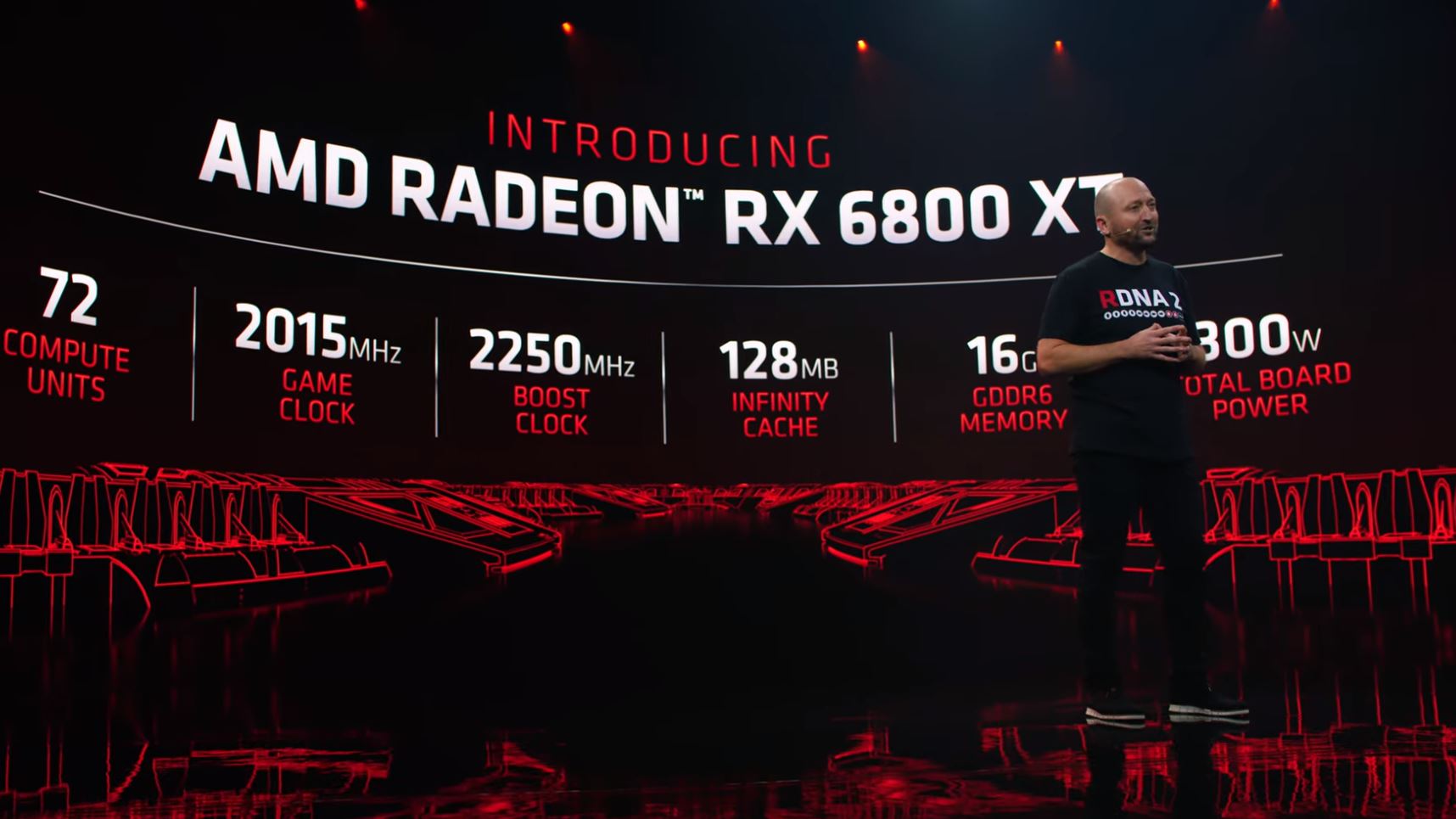
Here, AMD compares the RX 6800 XT to the NVIDIA RTX 3080 for gaming.
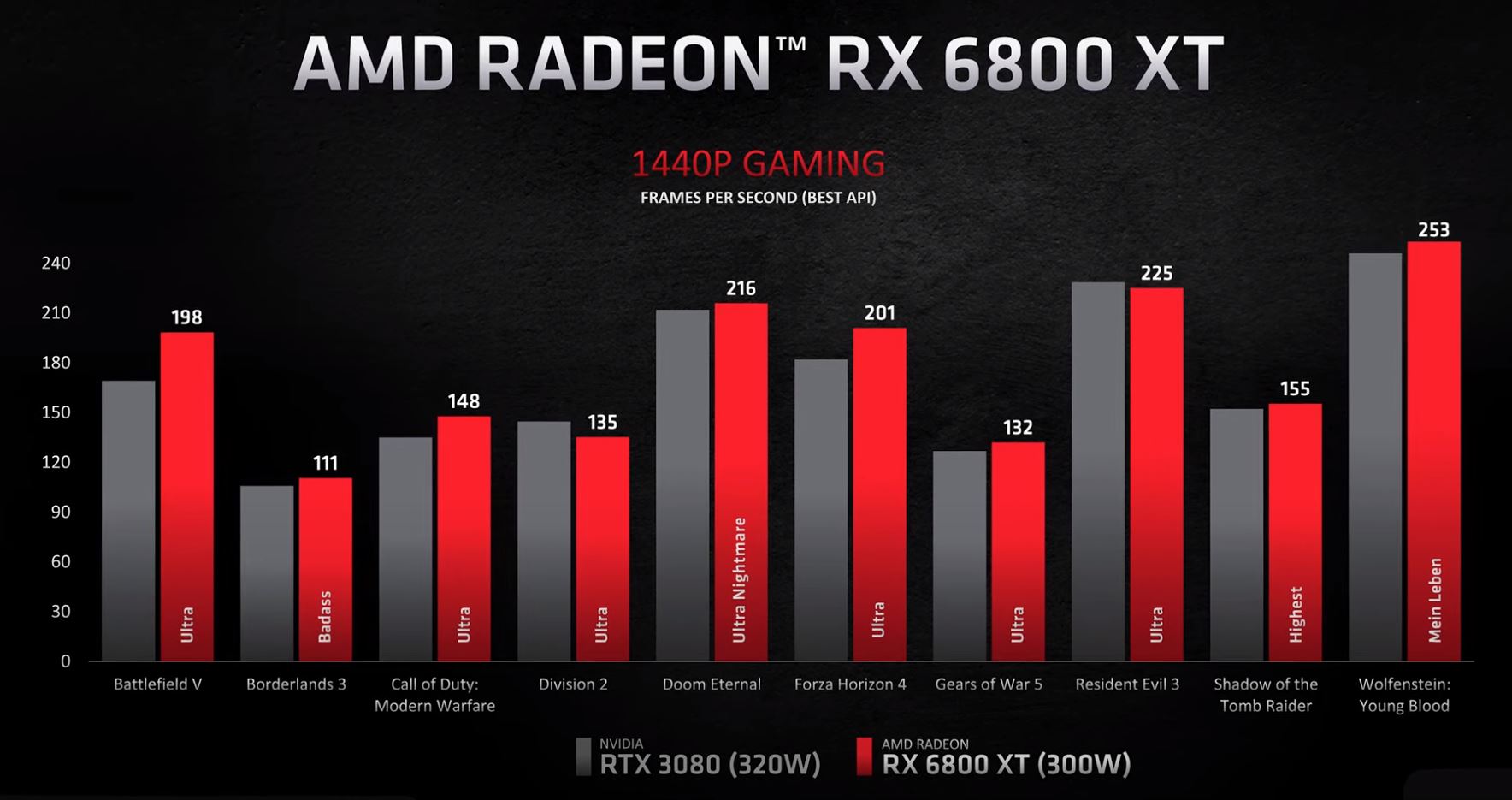
These will be available on November 18 at $649.
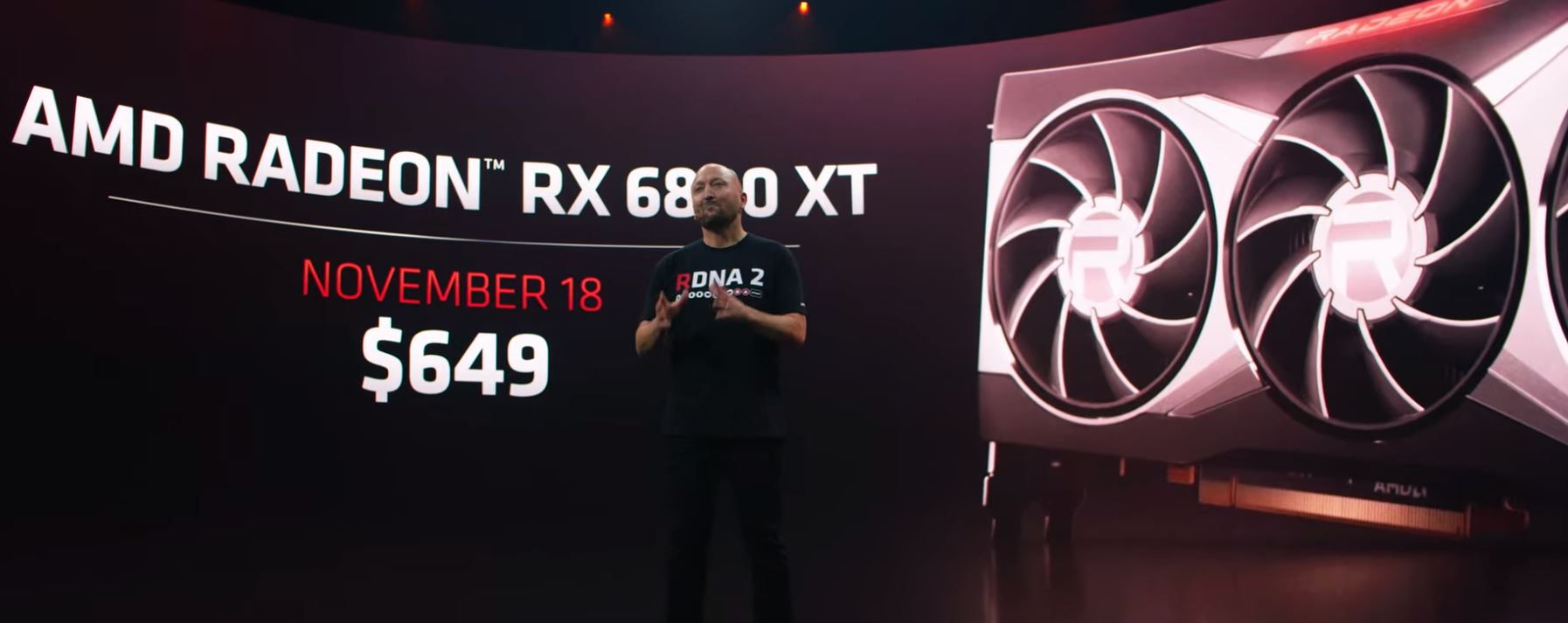
To our budget minded readers, this represents 10% fewer compute units yet a 35% discount versus the AMD Radeon RX 6900 XT. Based on those economics, and the fact that the higher-end GPU releases later, it seems like AMD is trying to steer the market toward the RX 6800 XT instead of the RX 6900 XT.
AMD Radeon RX 6800
Perhaps the more mainstream offering is the AMD Radeon RX 6800 that has only 60 compute units and lower clock speeds and an accompanying 250W rating instead of the 300W rating found on the larger cards.
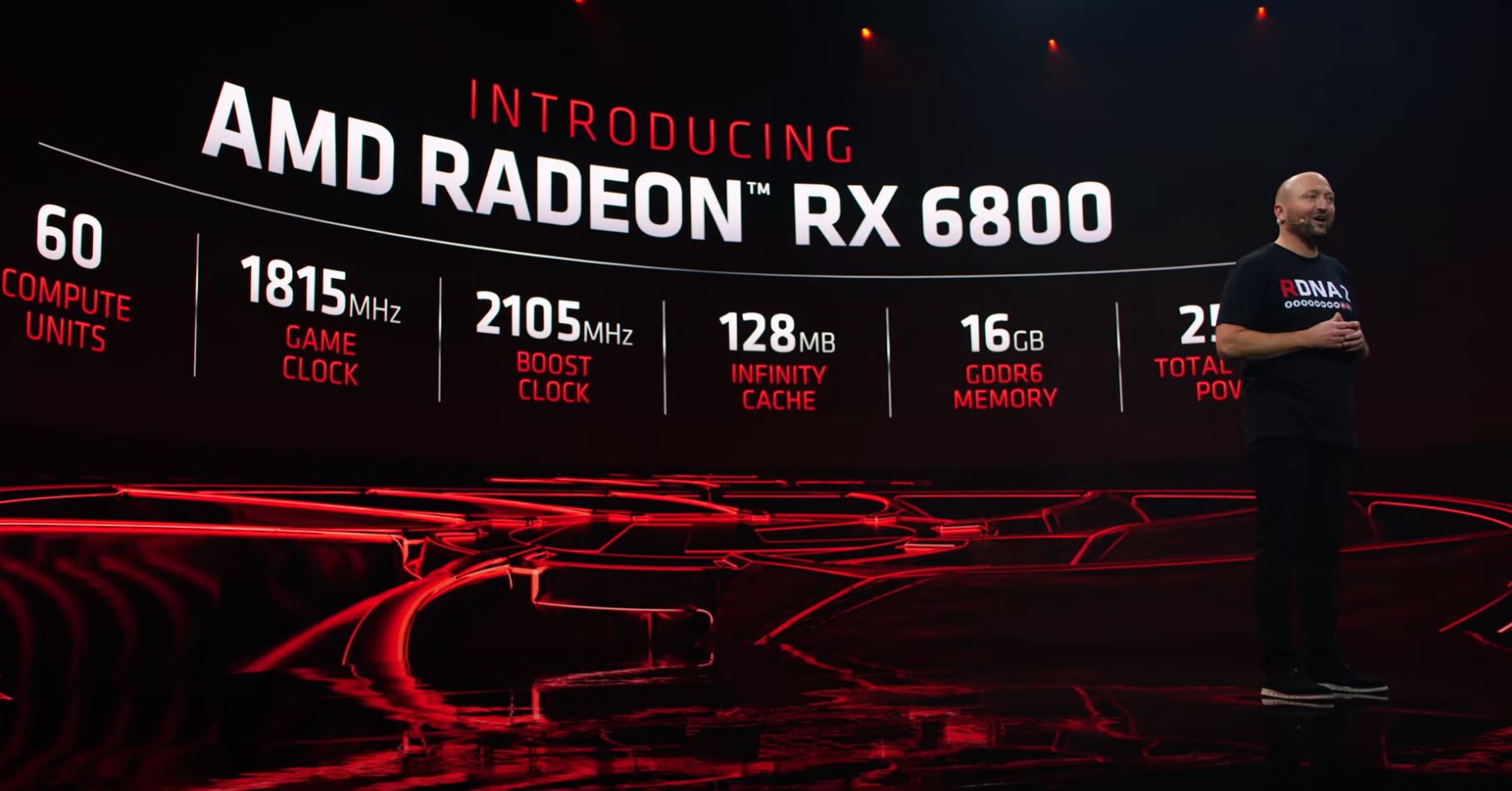
The other fascinating spec here is that this card still has 16GB of GDDR6 and 128MB Infinity Cache. While NVIDIA is relatively stingy with memory, AMD is providing lots of it.
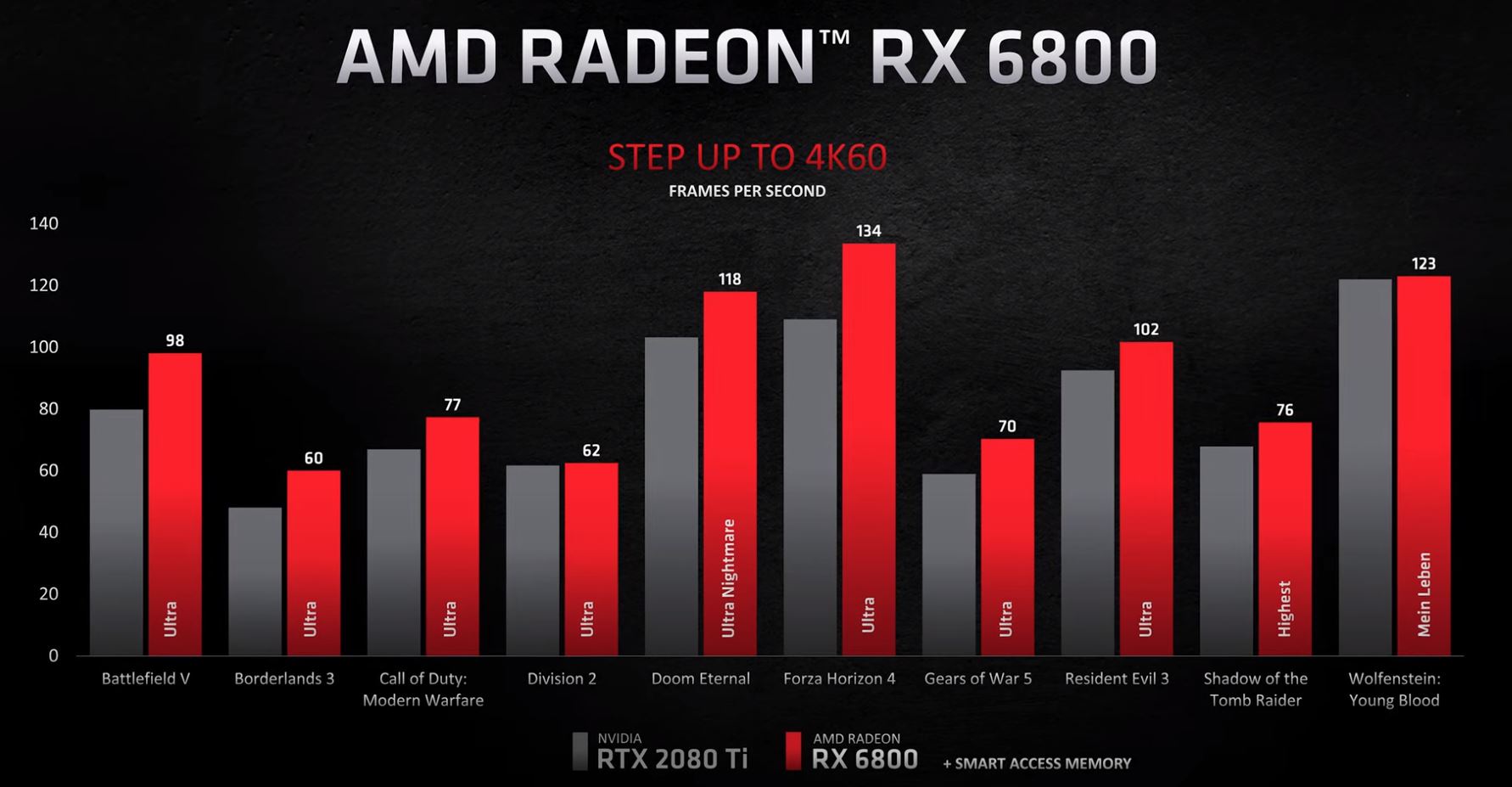
These will be priced at $579 and available the same day as the RX 6800 XT.
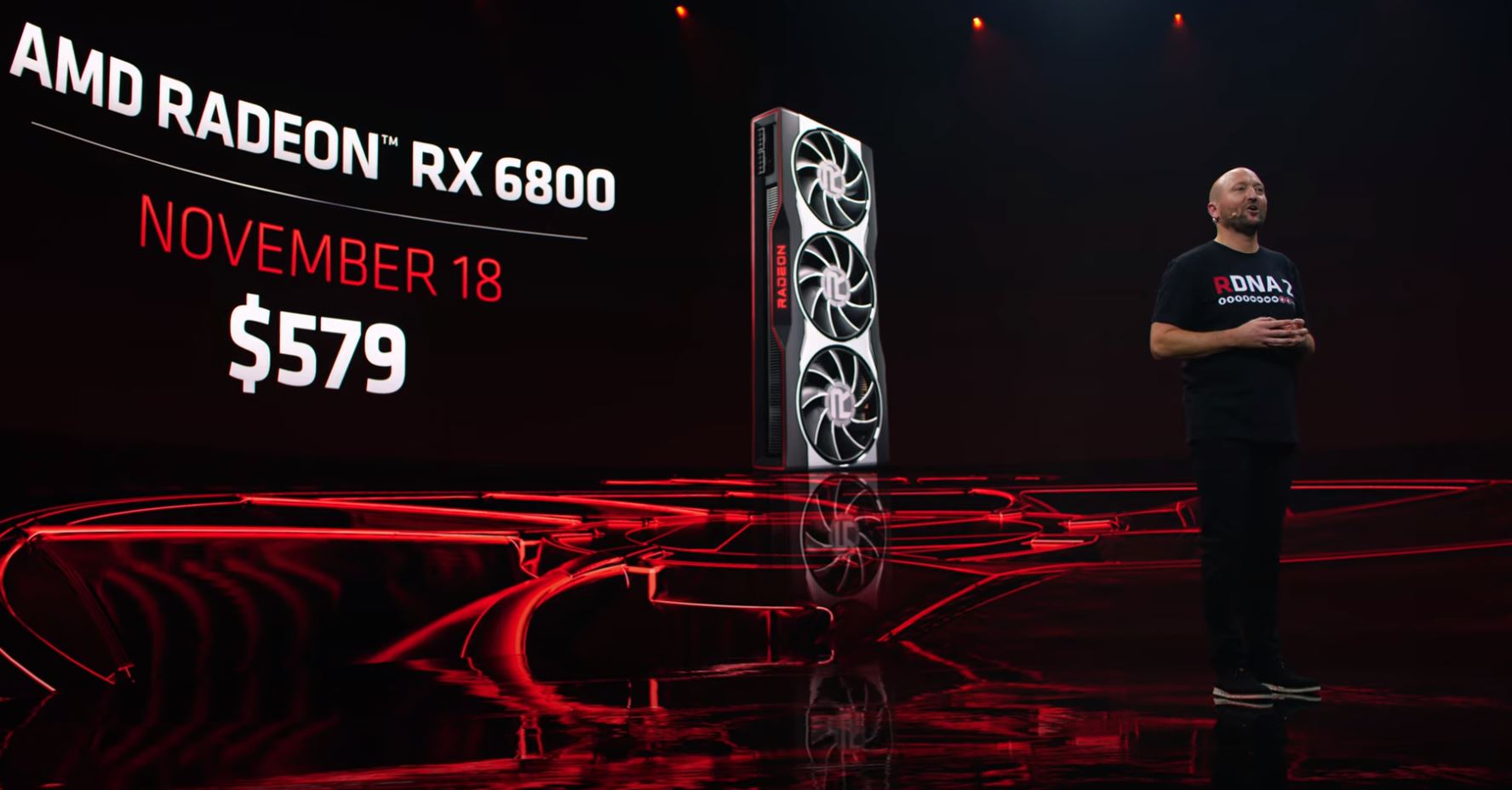
Here we are losing 16-17% of the compute units, and the ones remaining have lower clock speeds, and get only an 11% discount from the RX 6800 XT.
If one needs a 250W GPU instead of a 300W GPU, then the non-XT seems to make sense. Perhaps also if one only cares about memory capacity. Otherwise, one gets a lot more stepping up to the 6800 XT model.
Quick AMD RDNA 2 Feature Notes
We wanted to quickly discuss the Infinity Cache. AMD is making up for its lower 256b memory bandwidth by adding a 128MB on-chip cache. AMD explicitly said that the Infinity Cache is “based on the Zen L3 cache”. For those not familiar with AMD nomenclature, Zen is their CPU architecture codename.
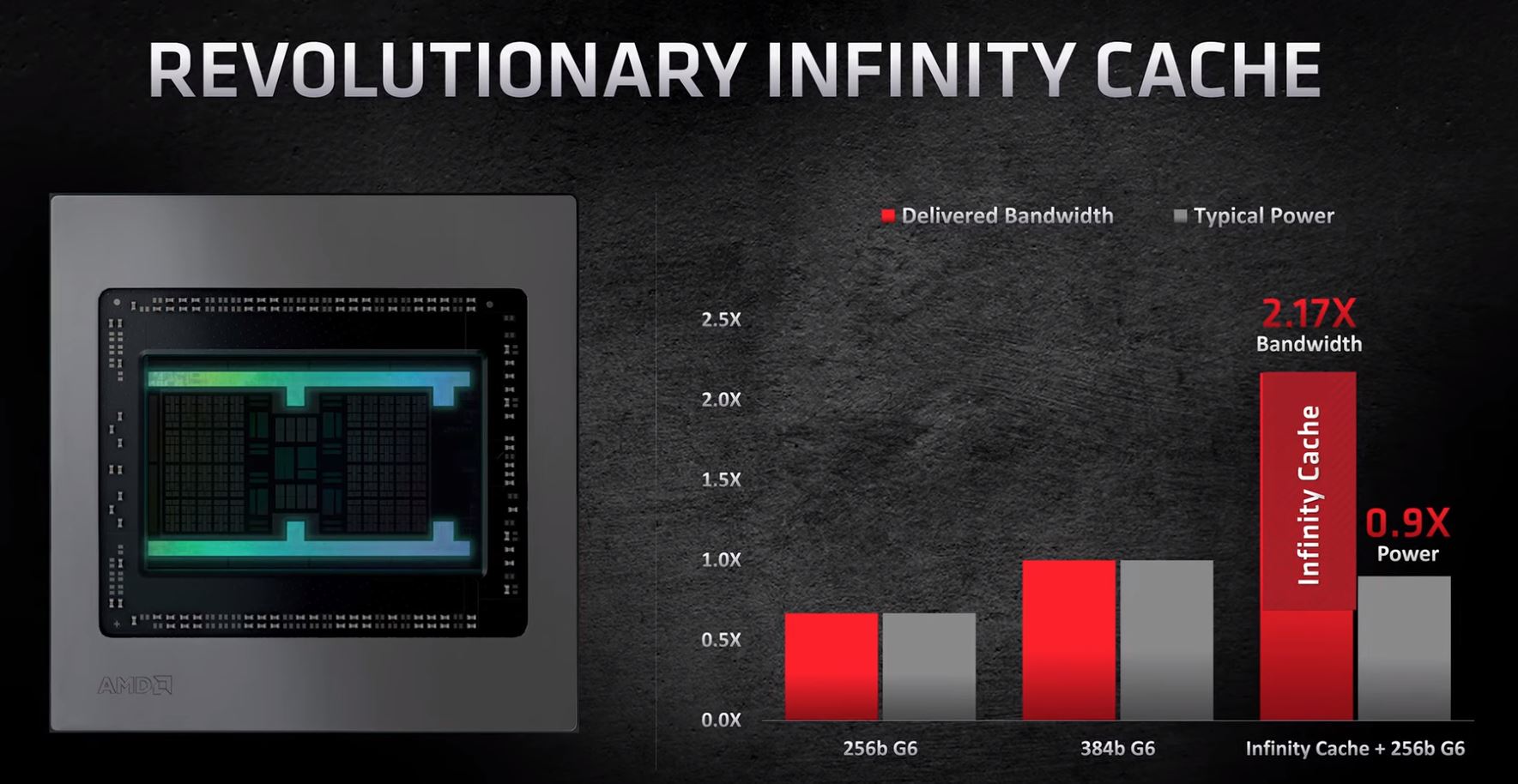
This will be interesting to see how it impacts performance. Particularly the concept of having on-chip caches is not a new one in computing. NVIDIA has engineers and architects that know what a cache is. It is more than slightly interesting to see AMD add a cache like this while NVIDIA did not especially since NVIDIA competes in markets where memory bandwidth is often the limiting factor. NVIDIA GPUs do have cache. As an example, the NVIDIA A100 has 40MB of L2 cache. It remains to be seen what AMD is doing here or if this is a larger cache with a marketing name. On the CPU side, the AMD EPYC Rome (and soon Milan) large caches have competed well against the small Intel Xeon caches.
Another aspect is “AMD Smart Access Memory” which allows a Ryzen CPU to have access to the GPU’s memory.
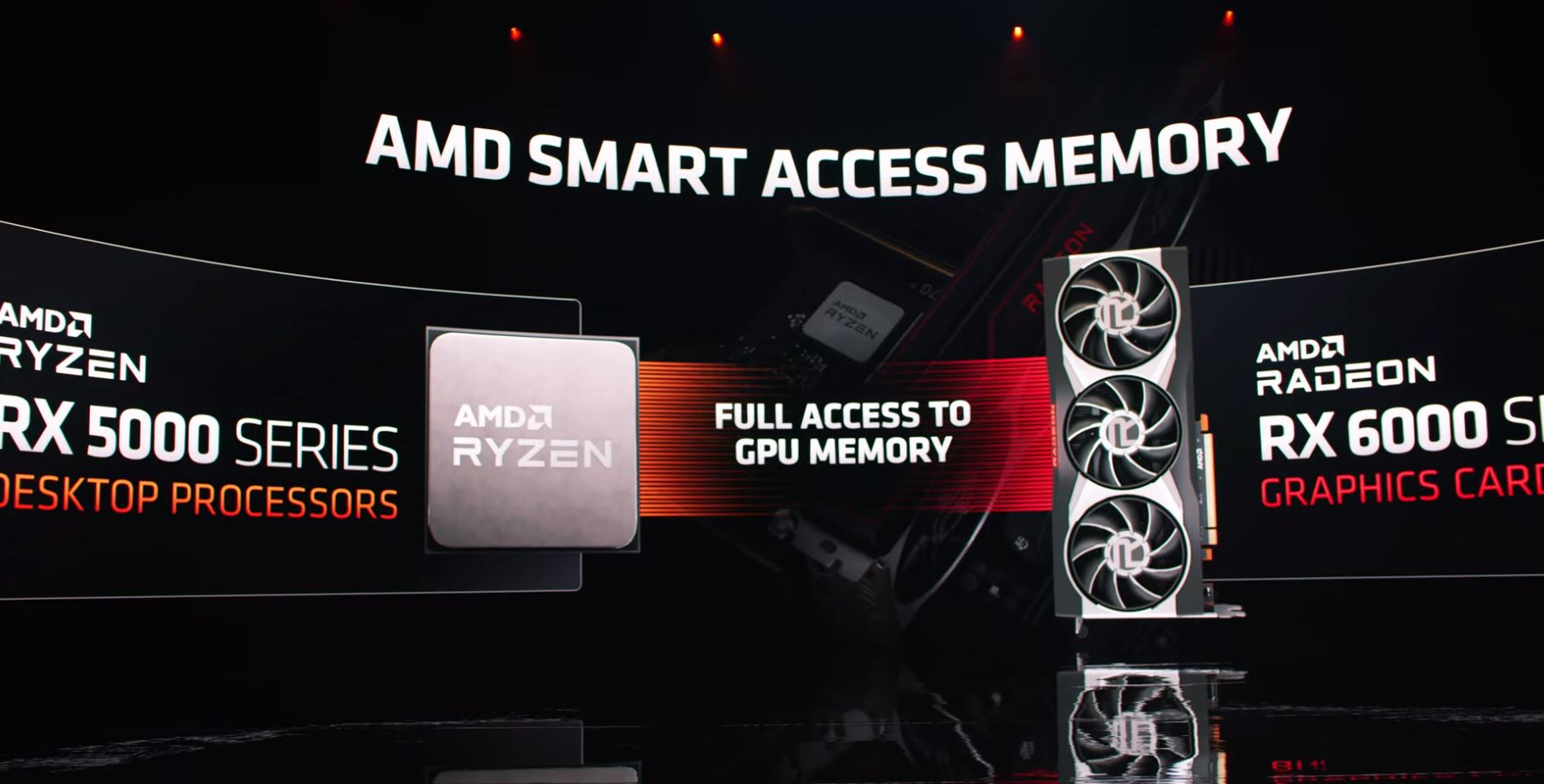
It will be interesting to dive more into what this is. We know AMD needs a cache coherent interconnect for its exascale efforts and effectively had to swap CCIX for CXL. It would be very interesting if this is an early derivative of this effort.
Final Words
There was a striking difference between AMD’s portrayal of its GPUs and NVIDIA’s. AMD focused solely on gaming. NVIDIA discusses how the gaming GPU can be used as a tool for AI beyond training and into productivity applications such as Adobe Creative Cloud application acceleration, and video conferencing enhancements. While AMD is positioning its GPUs for play, NVIDIA is positioning big GPUs such as the RTX 3090 for play and productivity. A lot of that comes down to the software stack. It will certainly be exciting to see how this next-generation unfolds.

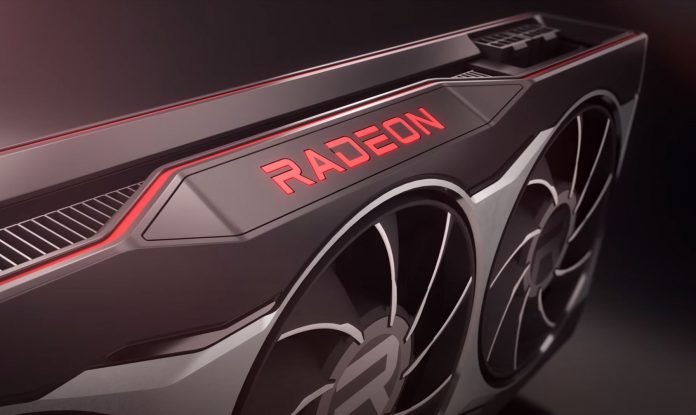



There’s the question if AMD will release “prosumer” priced workstation cards based on CDNA later on, or if that architecture will stay entirely Datacenter and HPC focused.
I’d love to see AMD aid more in supporting tensorflow/pytorch and release a 32GB card, they’d be able to make a great margin and would get sold by the palette.